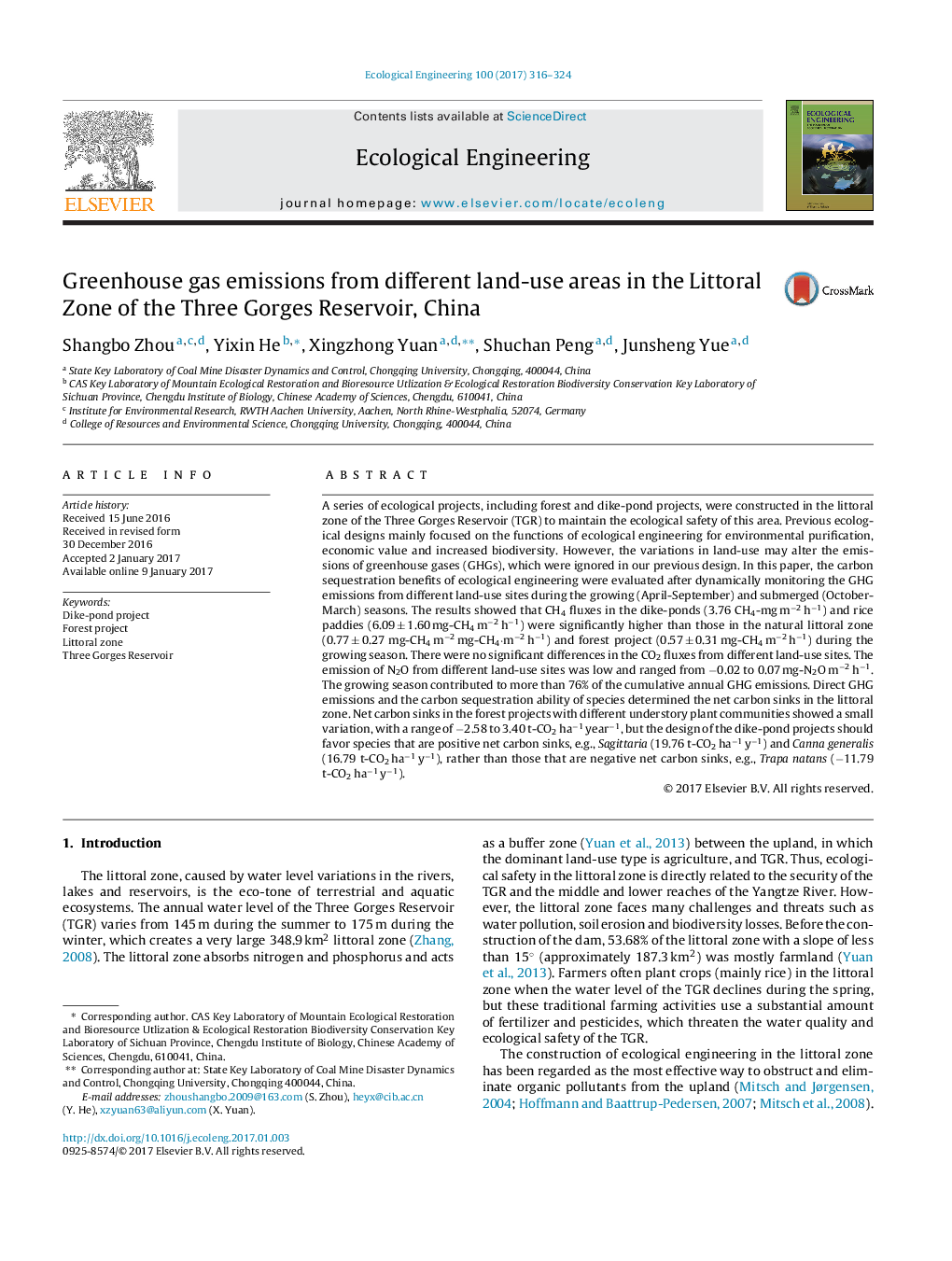| کد مقاله | کد نشریه | سال انتشار | مقاله انگلیسی | نسخه تمام متن |
|---|---|---|---|---|
| 5743734 | 1617999 | 2017 | 9 صفحه PDF | دانلود رایگان |
- Greenhouses gases emission in the littoral zone is mainly during the growing season.
- Environmental input output analysis was used to estimate the net carbon sinks of five land-use types in the littoral zone.
- Dike-ponds project based on a positive net carbon sink will be more eco-friendly.
- Forest project has no negative effects on greenhouses gases emissions in the littoral zone.
A series of ecological projects, including forest and dike-pond projects, were constructed in the littoral zone of the Three Gorges Reservoir (TGR) to maintain the ecological safety of this area. Previous ecological designs mainly focused on the functions of ecological engineering for environmental purification, economic value and increased biodiversity. However, the variations in land-use may alter the emissions of greenhouse gases (GHGs), which were ignored in our previous design. In this paper, the carbon sequestration benefits of ecological engineering were evaluated after dynamically monitoring the GHG emissions from different land-use sites during the growing (April-September) and submerged (October-March) seasons. The results showed that CH4 fluxes in the dike-ponds (3.76 CH4-mg mâ2 hâ1) and rice paddies (6.09 ± 1.60 mg-CH4 mâ2 hâ1) were significantly higher than those in the natural littoral zone (0.77 ± 0.27 âmg-CH4 mâ2 mg-CH4·mâ2 hâ1) and forest project (0.57 ± 0.31 mg-CH4 mâ2 hâ1) during the growing season. There were no significant differences in the CO2 fluxes from different land-use sites. The emission of N2O from different land-use sites was low and ranged from â0.02 to 0.07 mg-N2O mâ2 hâ1. The growing season contributed to more than 76% of the cumulative annual GHG emissions. Direct GHG emissions and the carbon sequestration ability of species determined the net carbon sinks in the littoral zone. Net carbon sinks in the forest projects with different understory plant communities showed a small variation, with a range of â2.58 to 3.40 t-CO2 haâ1 yearâ1, but the design of the dike-pond projects should favor species that are positive net carbon sinks, e.g., Sagittaria (19.76 t-CO2 haâ1 yâ1) and Canna generalis (16.79 t-CO2 haâ1 yâ1), rather than those that are negative net carbon sinks, e.g., Trapa natans (â11.79 t-CO2 haâ1 yâ1).
Journal: Ecological Engineering - Volume 100, March 2017, Pages 316-324
